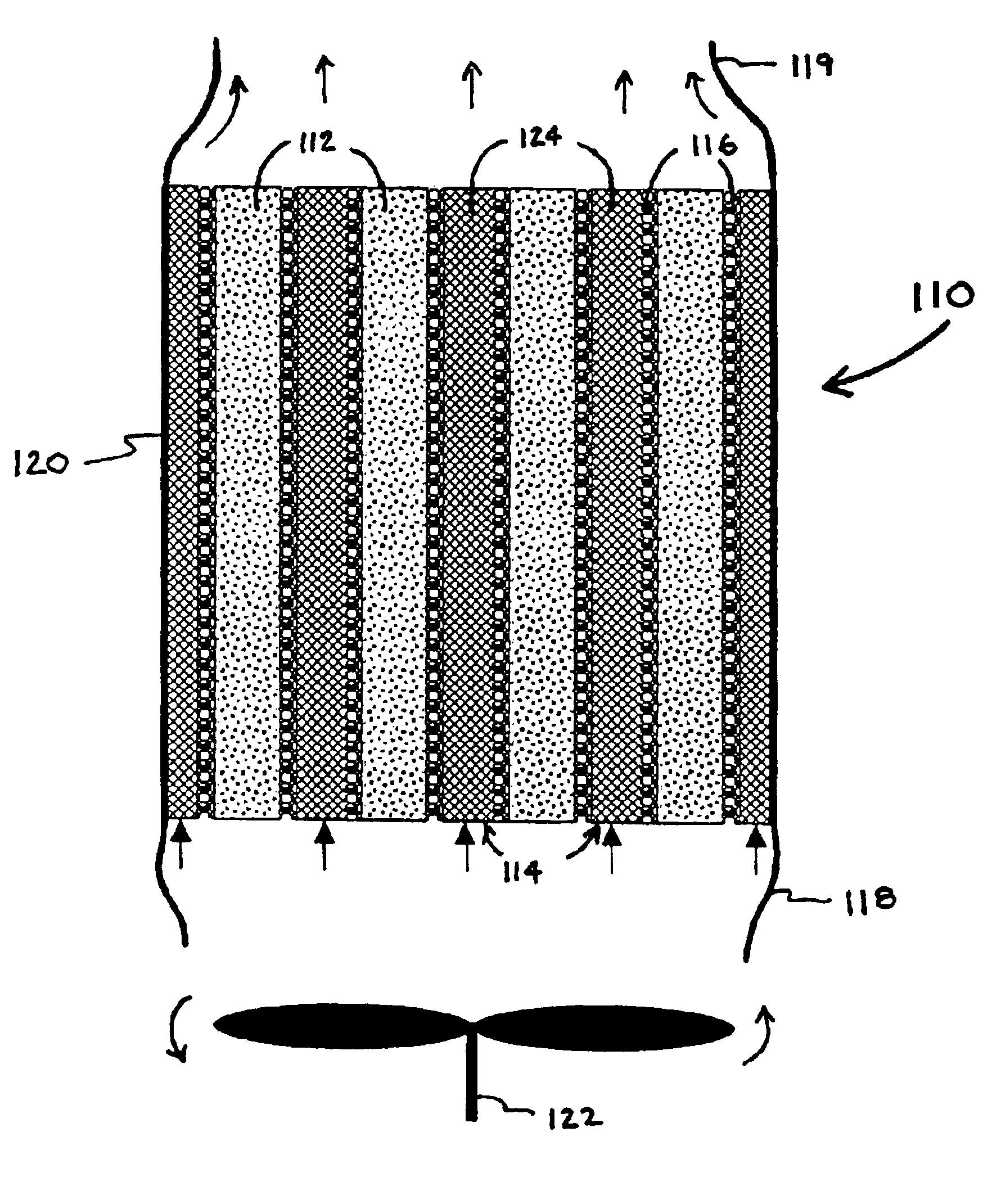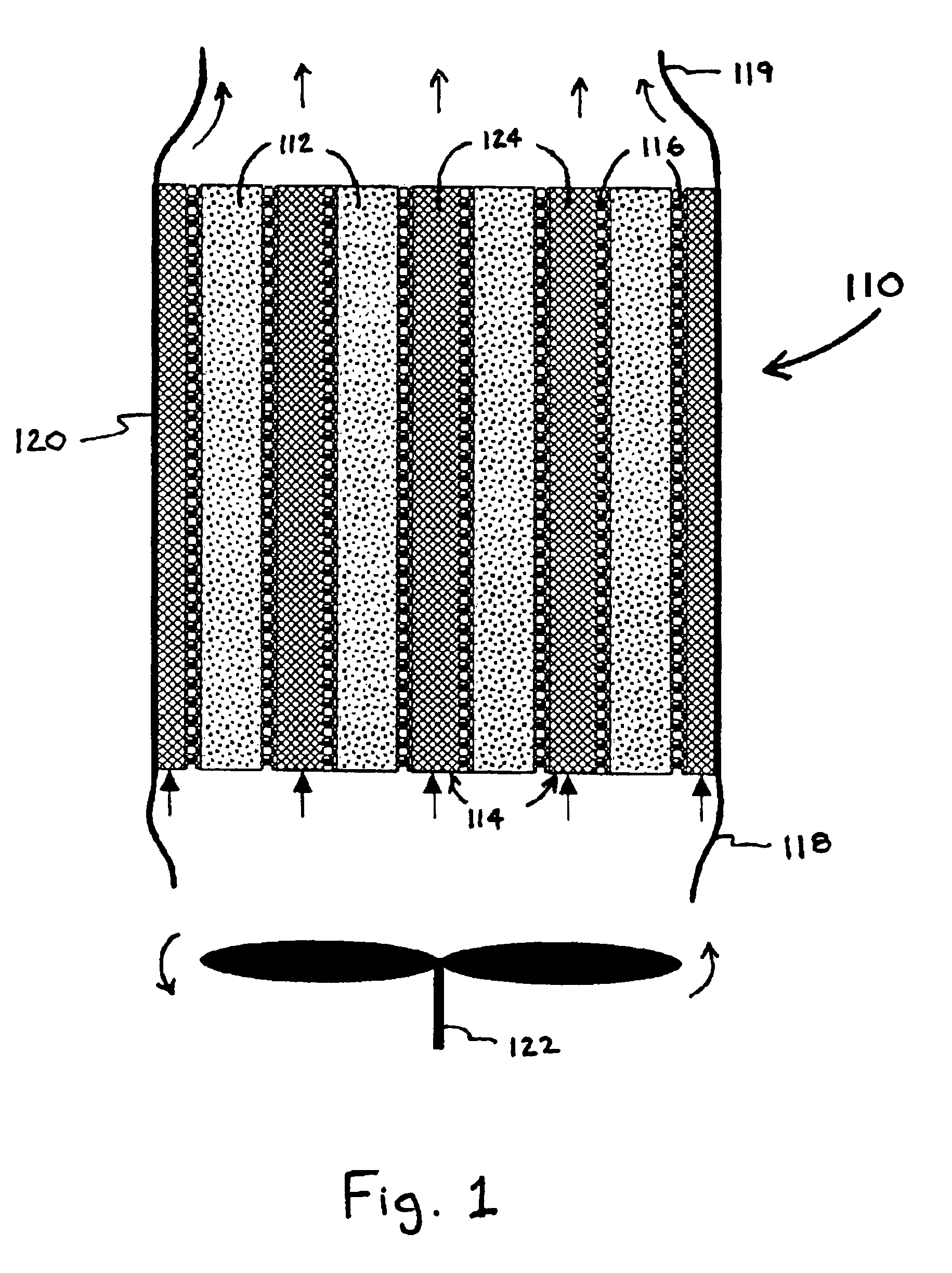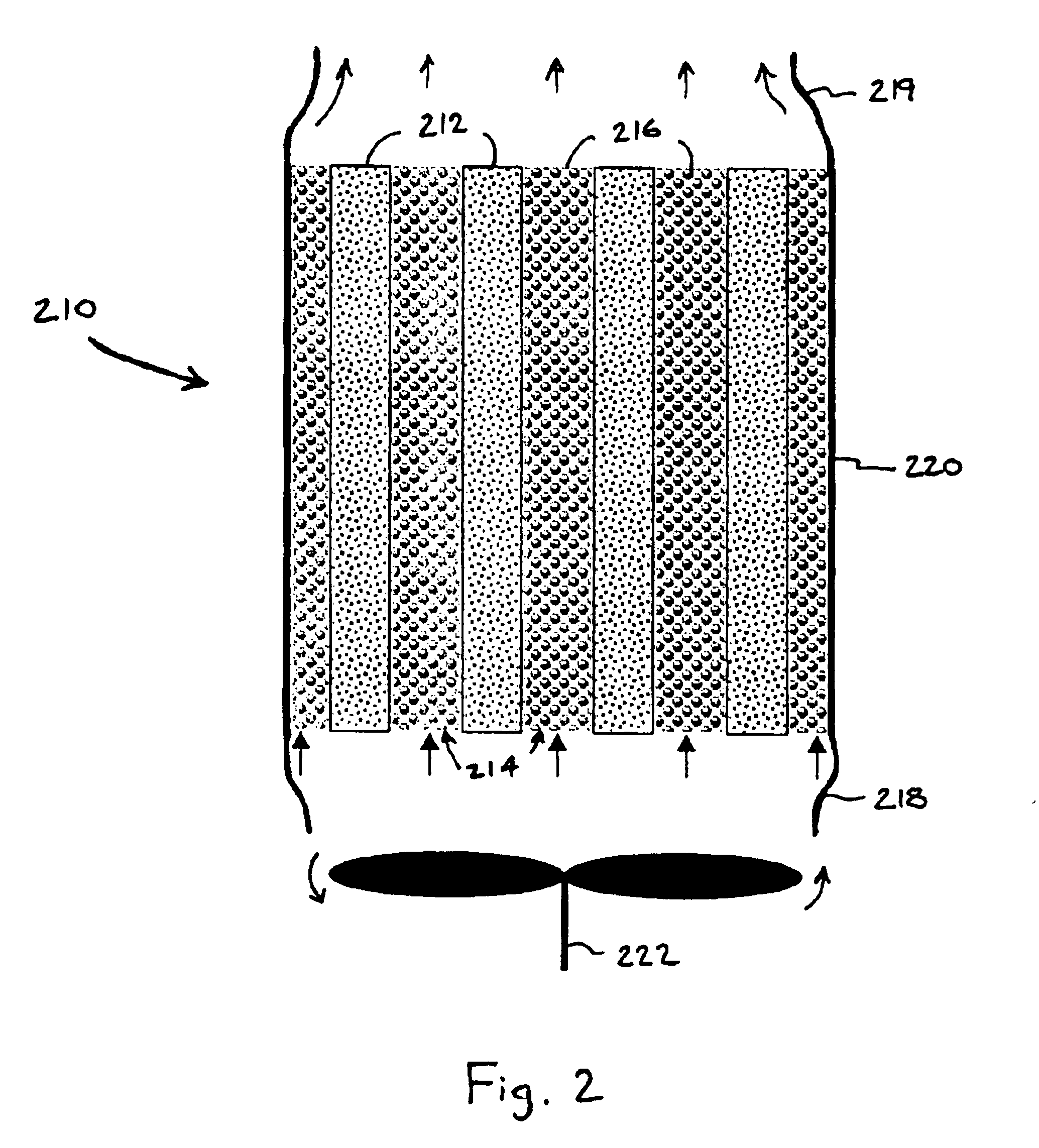Device for providing microclimate control
a microclimate and control device technology, applied in the field of providing microclimate control devices, can solve the problems of low cooling density of phase-change materials for direct cooling of people, ineffective pcms, and individual's often significant perspiration, so as to increase the capacity of desiccant, enhance the water extraction capability of the device, and reduce the amount of heat transferred
- Summary
- Abstract
- Description
- Claims
- Application Information
AI Technical Summary
Benefits of technology
Problems solved by technology
Method used
Image
Examples
example 1
Modified Carbon with PCM
This device includes 12 layers of modified carbon, 7 PCM bags, and 12 layers of flow channel material. All layers are a finished size of 10 cm×15 cm. The carbon sheets each weigh about 7.2 grams, 50% of which is carbon. For a 50% LiCl / 50% carbon loading, a total of 3.6 grams of LiCl is impregnated into each sheet. The 3.6 grams of LiCl is dissolved into 8.5 ml of 50% deionized water 150% methanol. The carbon sheet is pre-treated with 0.5 ml of 50% deionized water 150% methanol on each side. While the sheet is still moist, a total of 3 ml of the salt / water / alcohol mixture is wicked into the sheet. Then the sheet is placed in a 50° C. oven for at least two hours to dry. The sheet is then wicked a second time (after pre-treating) with about 3 ml of salt / water / alcohol mixture. The sheet is again dried at 50° C. for at least two hours, then again pre-treated and wicked with the remaining solution. The sheet is now ready for final drying at 70° C. in a vacuum oven ...
example 2
Modified Carbon with No PCM
This device has 12 layers of modified carbon and 12 layers of flow channel material. All layers are a finished size of 10 cm×15 cm. The carbon sheets each weigh about 7.2 grams, 50% of which is carbon. For a 50% LiCl 150% carbon loading, a total of 3.6 grams of LiCl is impregnated into each sheet. The 3.6 grams of LiCl is dissolved into 8.5 ml of 50% deionized water / 50% methanol. The carbon sheet is pre-treated with 0.5 ml of 50% deionized water / 50% methanol on each side. While the sheet is still moist, a total of 3 ml of the salt / water / alcohol mixture is wicked into the sheet. Then the sheet is placed in a 50° C. oven for at least two hours to dry. The sheet is then wicked a second time (after pre-treating) with about 3 ml of salt / water / alcohol mixture. The sheet is again dried at 50° C. for at least two hours, then again pre-treated and wicked with the remaining solution. The sheet is now ready for its final drying at 70° C. in a vacuum oven overnight. T...
example 3
Unmodified Carbon with PCM
This device includes 12 layers of unmodified carbon, 7 PCM bags, and 12 layers of flow channel material. All layers are a finished size of 10 cm×15 cm. The carbon sheets each weigh about 7.2 grams, 50% of which is carbon. The sheets are dried at 70° C. overnight in a vacuum oven to remove water. The PCM bags are made of Rexam. The measurements from inside seal to inside seal are about 15 cm×15 cm. Five of these bags are filled with 106 grams of sodium sulfate decahydrate Na2SO4.10H2O. The other two bags are filled with 53 grams of the PCM for the sidewall pieces. Twelve pieces of flow channel material are cut and arranged in pairs so that the weave on one layer is perpendicular the weave on the second layer. The carbon sheets, PCM bags, and flow channel material are assembled under a nitrogen environment to prevent the carbon sheets from adsorbing water. Two Lexan polycarbonate pieces are placed on the top and the bottom of the stack and are bound together ...
PUM
| Property | Measurement | Unit |
|---|---|---|
| transition temperature | aaaaa | aaaaa |
| volumetric energy density | aaaaa | aaaaa |
| temperature | aaaaa | aaaaa |
Abstract
Description
Claims
Application Information
 Login to View More
Login to View More - R&D
- Intellectual Property
- Life Sciences
- Materials
- Tech Scout
- Unparalleled Data Quality
- Higher Quality Content
- 60% Fewer Hallucinations
Browse by: Latest US Patents, China's latest patents, Technical Efficacy Thesaurus, Application Domain, Technology Topic, Popular Technical Reports.
© 2025 PatSnap. All rights reserved.Legal|Privacy policy|Modern Slavery Act Transparency Statement|Sitemap|About US| Contact US: help@patsnap.com



